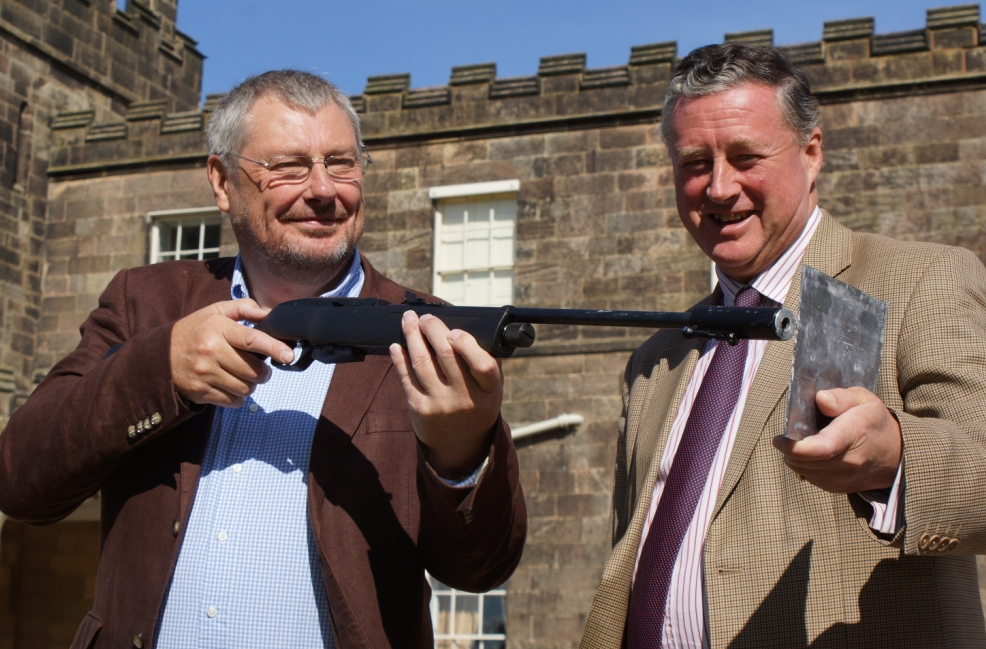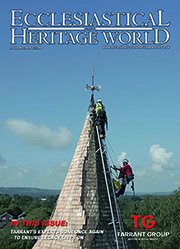Hi-tech deterrent means churches can now be 'shot' of lead thieves
 Instances of metal theft - in particular theft of lead from churches - have seen a reduction from the levels of only a couple of years ago, thanks in great part to the combination of more proactive policing across the country and the introduction of the Scrap Metal Dealers (SMD) Act in October last year.
Instances of metal theft - in particular theft of lead from churches - have seen a reduction from the levels of only a couple of years ago, thanks in great part to the combination of more proactive policing across the country and the introduction of the Scrap Metal Dealers (SMD) Act in October last year.
Unfortunately, that will be of little comfort to the congregations and PCCs of churches across the country who have recently fallen victim to the crime, which seems to happen in clusters.
In the space of under a fortnight, between 21 September and 5 October, four churches in Norfolk and one over the border in Suffolk were targeted - two in the pilgrimage centre of Walsingham.
The thefts happened just days after delegates from almost every diocese in England had met in Norwich for the national church buildings conference, which discussed that very issue among others. They followed a similar spate in the two counties at the end of August and in early September when one church a week had been plundered.
Those cases, together with instances up and down the country, serve to highlight the fact that there are still thieves motivated enough to steal the lead and that there are also unscrupulous scrap metal dealers who are willing to buy the metal. The fact that the offences are still taking place after the introduction of the new law shows that there are still problems with metal theft and the recycling industry.
Scottish churches are also not immune. Saint Salvador's Church in Dundee was recently attacked twice within a short period of time. The BBC reported that thousands of pounds worth of damage had been caused to the ornate interior of the church and the Rector, Rev Clive Clapson, said the thieves were 'Éstealing from some of the poorest people in Scotland.'
The SMD Act does not apply in Scotland, and there is some evidence of cross-border activity to both steal and dispose of the metals. The Scottish and Northern Ireland administrations are to follow Westminster in the introduction of similar legislation, but the timescales involved are as yet unknown.
To some, the crime may appear victimless but that is far from the truth, as the vicar of another target of the thieves - St Mary's in Maryport - explained. 'They might think that it is fine - we can get insurance,' said Rev Susan McKendrey. 'But every time something like this happens our insurance premiums go up. Like many churches we struggle and this just makes life harder for all of us.'
Those involved in the business of protecting churches from such thefts know that the new legislation was never going to be a complete solution, although there is no doubt that it has had a positive impact. The causes of crime and the motivation of offenders are known to be complex issues, with no easy answers. A governing factor, however, is the ability of the thieves to dispose of the stolen lead - quite simply, if they cannot sell it they won't steal it!
Lead is a highly recyclable material and at some stage all stolen lead must pass into the legitimate market. There is a constant challenge, therefore, to equip the legitimate traders with the means to easily identify stolen lead.
Now, a revolutionary invention, developed with the help of ballistics experts, enables just such a process of identification. Trace-in-Metal, which has been designed by a former West Yorkshire police detective, fires thousands of microdots into the lead sheets - 'marking' them with a unique identifying code.
In addition to being impregnated into the metal, the dots - which are almost invisible to the naked eye - are also painted on to each sheet using an all-weather lacquer that shows up under ultra-violet light. Such is the science behind Trace-in-Metal that even the smelting process cannot destroy the nickel dots and their unique tags.
At the national launch of the product at Ripley Castle, Trace-in-Metal director John Minary said: 'We have been developing this unique anti-theft device for a number of years, and after successfully trialling it on a church in Huddersfield, we are now launching it nationwide.
'I'm proud to say it is a Yorkshire invention that utilises Swedish innovation and ballistics expertise. It is totally unique and we believe it will revolutionise the way valuable metal, in particular lead, is protected from thieves.
'Metal theft is big business and the Home Office estimates it costs the UK economy around £220m a year. With resourcing being an on-going problem for police forces, anything that helps in preventing crime and saving police time must be welcomed. We see Trace-in-Metal as a valuable weapon in the crime prevention arsenal, and one that will help protect historic buildings around the country.'
Mr Minary added that in addition to its anti-theft qualities, Trace-in-Metal is working with a large national insurer to provide improved insurance terms for buildings where the system is installed.
Ripley Castle owner Sir Thomas Ingilby, Bt (pictured right in our photo with John Minary) runs the Stately Home Hotline, which correlates and disseminates security intelligence to over 1,500 UK heritage properties. He said: 'Lead theft is a constant source of concern to every owner of a historic building, be they stately homes, boarding schools, public buildings or churches. Not only is lead very expensive to replace, the damage that can be caused by a theft can be incalculable. Often the insurance will not cover the costs of repairs and replacement, and the owners are left badly out of pocket.
'Trace-in-Metal is a very clever answer to an old problem and one I'm sure that will be looked at seriously by the owners of historic buildings up and down the country.'
Marking lead with Trace-in-Metal means both thief and potential receiver know that the lead can be traced throughout the recycling process. If the legitimate trader knows it is stolen they won't buy it and that puts downward pressure on unscrupulous traders and thieves.
Until that process becomes commonplace, lead from church roofs will unfortunately continue to be stolen, and congregations will continue to foot ever increasing bills to keep their precious lead on the roof.
For further information visit www.trace-in-metal.com














